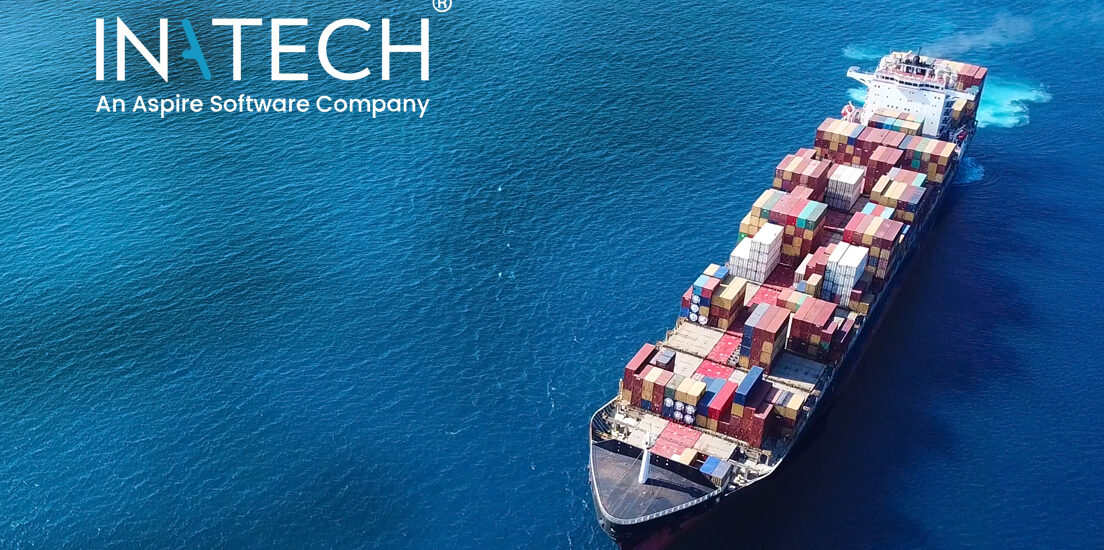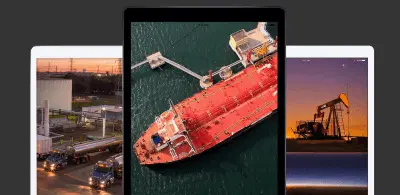- December 12, 2023
- Posted by: Tom Hedge
- Blogs

The maritime industry is at a pivotal juncture – as global awareness of environmental issues grows, so does the urgency to make shipping more sustainable.
At the heart of this transformation lies the need for cleaner and greener bunker fuels. So, in this article, we delve into the world of bunker fuel, its environmental implications, and the promising sustainable innovations that are shaping the future of green shipping.
Bunker Fuel: The Current Situation
Bunker fuel is a type of heavy oil that’s produced by refining crude oil. It’s been the lifeblood of the maritime industry for decades and is an indispensable resource for global trade and transportation. But, while it’s served the industry well to date, its environmental impact has raised significant concerns.
Bunker Fuel Concerns
Emissions
Carbon dioxide isn’t the only emission the shipping industry is aiming to reduce. Bunker fuel is high in sulfur and when it’s burnt, it generates harmful emissions, including sulfur dioxide (SO2), nitrogen oxides (NOx), and particulate matter. (In fact, it contains 2,000 times as much sulfur as the diesel used in US and European automobiles.)
These emissions cause significant air pollution and are detrimental to both human health and the environment. Reducing these emissions will be essential in protecting the health of those working near ports.
Sulfur dioxide is also a greenhouse gas, and so reducing its emission into the atmosphere is important for mitigating climate change.
Marine Pollution
Bunker fuel spills are notorious for causing catastrophic marine pollution incidents. Accidental spills release oil into fragile ecosystems, and due to its viscosity, it’s harder to remove compared to crude oil. This leads to long-lasting ecological damage and endangers marine life. Heavy oils also acidify soil and water and, when exposed to UV light, they become more toxic and are capable of dissolving corals rapidly.
Current Regulation
The International Maritime Organization (IMO) has set a target of reducing emissions by 50% by 2050 – in comparison to 2008 levels. Some of the regulations helping to ensure the industry meets this target are below.
International Regulations
In 2020, the IMO implemented new regulations (known as IMO 2020) limiting the sulfur content of bunker fuel to 0.5% m/m (down from 3.5% m/m, the requirement that had been in place since 2012).
This applies in international waters and to all ships – except some vessels that are unable to use low-sulfur fuel. Some exceptions and alternatives are in place for such vessels; for example, installing scrubbers, which remove sulfur from exhaust fumes, allows ships to continue using bunker fuel and comply with regulations at the same time. (However, scrubbers can cost around USD 5 million and take up to six months to install.)
Otherwise, ships have to use VLSFO – Very Low Sulfur Fuel Oil (oil with less than 0.5% m/m). (Low Sulfur Fuel Oil (LSFO) has less than 1% and High Sulfur Fuel Oil (HSFO) has less than 3.5%.)
Compliance with IMO 2020
Shipping companies have their work cut out for them when it comes to proving fuel compliance. It’s still early days when it comes to IMO 2020 and alternative fuels may not be available on a consistent basis in some ports.
The regulation specifies a protocol that must be followed if a ship cannot obtain compliant fuel (under Regulation 18 of MARPOL Annex VI). If such fuel is not available at port, the ship must notify its Administration as well as the next destination’s port authority, and the Administration will then notify the IMO.
Notification is carried out in the form of a Fuel Oil Non-Availability Report (FONAR), and evidence of attempts to obtain compliant fuel must be documented. If the information is not satisfactory, further inspections may be carried out, including oil sampling.
Sulfur Emissions Control Areas (SECAs)
The restrictions for SECAs are even tighter; the maximum sulfur content allowed is 0.1% m/m. To meet this requirement, ships have to use Ultra Low Sulfur Fuel Oil (ULSFO) or Marine Gas Oil. They may also install scrubbers or use alternative, cleaner fuels.
ULSFO is more expensive to produce than traditional bunker fuel and the industry has felt the impact of these regulations, with the cost of transport being passed on to customers.
The SECAs include the North Sea, Baltic Sea, the English Channel, the region up to 200 nautical miles off the coast of North America, and the US Caribbean Sea.
China’s ECA Plan
Over the last few years, regulations in China have changed in order reduce sulfur and other emissions. From 2019, ships entering China’s ECAs had to use fuel with less than 0.5% sulfur and in 2020, vessels entering the Inland Water ECA were restricted to fuel with less than 0.1% sulfur; the same restriction was applied to ships entering the waters of Hainan Island as of January 2022.
Carbon Intensity Indicator (CII) Regulations
Ships of 5,000 gross tons or more now have to supply data on their fuel consumption in order to establish their energy efficiency rating. The rating is on a scale from A – E and is a measure of the CO2 emitted per unit of cargo capacity per nautical mile.
Upcoming Changes
From 2025, the Mediterranean Sea is set to become a SECA. Estimates suggest that this will prevent at least 1,000 premature deaths per year as well as reduce new cases of childhood asthma by 2,000 per year. It’ also possible that from 2025, the 0.1% sulfur restriction will apply throughout China.
The Fuel EU Maritime Regulation will be in place from 1st January 2025. The regulation aims to decarbonize the shipping industry by limiting the greenhouse gas emissions for ships trading in the EU or EEA. Some refinements will be made regarding the specifics of what the regulation mandates but of course, it will drive demand for greener fuels.
The regulation will also require container ships and passenger ships to connect to shore power in a Trans-European Transport Network port (if they’re at berth for at least two hours). This will apply at any port that has shore power from 2035.
Emerging Green Alternatives
The urgent need to mitigate the environmental impact of bunker fuels has spurred innovations in sustainable alternatives. Let’s explore some of the promising options.
Liquefied Natural Gas
LNG is gaining traction as a cleaner alternative to traditional bunker fuel. It produces up to 80% less NO2 and virtually no SO2. Companies are retrofitting their vessels or investing in new LNG-powered ships in order to comply. However, retrofitting is costly and for that reason, biofuels may be more appealing for some operators.
Biofuels
Biofuels made from vegetables oils, cooking oils, glycerol, fatty-acid-ethyl esters (FAEE) or fatty-acid-methyl-esters (FAME), among other sources, are another greener option, producing less sulfur.
Some of these fuels – known as drop-in fuels – are compatible with existing engines without requiring any modifications, making them a cost-effective alternative.
Most biofuels on the market are a blend between 30% biofuel and either HSFO, VLSFO, or marine gas oil. Blends with a higher percentage of biofuel (up to 100%) are rarely used at-present, but they’re proven to work in existing engines.
Hydrogen
Hydrogen holds immense promise as a clean fuel for the shipping industry. However, infrastructure for hydrogen production and distribution needs further development. It also has low energy density (which would increase the storage needs onboard a ship), making it more suitable for short sea shipping.
Green Methanol
Maersk recently launched the world’s first methanol-enabled container ship. It sourced the fuel for its maiden voyage from Dutch producer, OCI Global, and is preparing to receive a fleet of methanol-enabled ships from 2024.
There are various ways to produce bio-methanol, and OCI Global produces it in its US facilities, capturing biogas from organic waste at landfill sites. It is then converted to biomethane and injected into the gas grid, then methanol is produced using the current infrastructure. As such, it has the dual benefit of easy entry to the market and removing methane emissions from the atmosphere. (An alternative is e-methanol which is produced from hydrogen.)
Ammonia
Ammonia hasn’t been used much in practice in shipping but its applications in other industries suggest it will be appropriate, and new, compatible engines are in development.
With that said, there are issues around toxicity that need solving; ship designs may be more complex as a result, and not all types of vessels will be able to accommodate the changes. It’s expected that the fuel will be best-suited to deep-sea shipping.
Challenges
While sustainable bunker fuels offer a path to greener shipping, they come with their set of challenges:
- Infrastructure: Developing the infrastructure required for alternative fuel production, storage, and distribution remains a significant challenge, and expanding the facilities is an ongoing effort.
- Costs: As mentioned, initial investments in retrofitting vessels or acquiring new ships that run on sustainable fuels can be substantial.
- Fuel compatibility: The quality of new fuels may vary across regions until clearer international standards are established. Companies will need to exercise caution to avoid mixing fuels from different suppliers without testing, and this may complicate logistics.
How Can Marine Fuel Management Software Make the Transition Easier?
Our cloud based solution, Shiptech, automates fuel procurement and management for all types of operators, including dry bulk, cargo, tankers and containers. Here’s how it can help you optimize costs while keeping up with changing regulations:
- Compliance: Our software allows you to monitor fuel consumption data in real-time, making sure that ships adhere to planned consumption rates.
- Predictive analytics: You can forecast fuel demand based on numerous data points, enabling well-informed purchasing and route optimization decisions.
- Supports alternative fuels: Shiptech supports a range of alternative fuels, including (but not limited to) LNG, methanol, hydrogen and ammonia.
- Cash flow and capital management: A range of financial analysis tools help improve forecasting, cash flow management and claims management.
- Pre-deal analysis: View marine fuel data from 350+ ports and supplier directories. Interactive maps showing your fleet’s location combined with advanced search options help you secure the best deals.
These are just the highlights – click to learn all about what Shiptech has to offer, or Bunkertech, our solution for traders and suppliers.
Conclusion
The maritime industry is navigating toward a more sustainable future, and sustainable innovations in bunker fuel are steering it in the right direction. In addition, the requirement to reduce emissions, mitigate pollution, and meet stringent regulations has sped up the development and adoption of cleaner alternatives.
Keeping up with regulatory changes and compliance is a lot of work. To free up time to do so, automate your operations with Shiptech – contact us today to book a demo.


